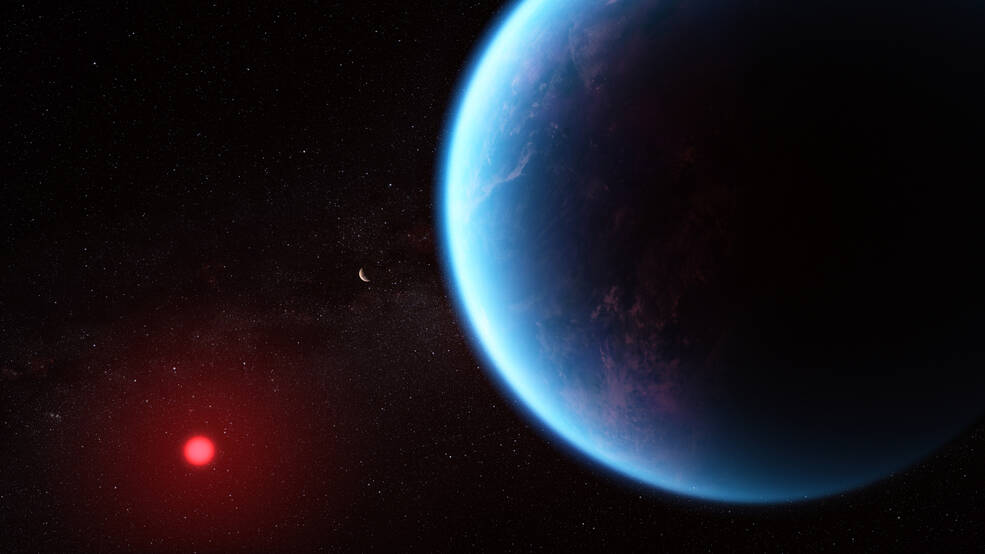In a new investigation, NASA’s James Webb Space Telescope, has revealed the presence of carbon-bearing molecules including methane and carbon dioxide, in the exoplanet K2-18 b. K2-18 b is an 8.6 times as massive as Earth. The new discovery adds to recent studies suggesting that K2-18 b could be a Hycean exoplanet, one which has the potential to possess a hydrogen-rich atmosphere and a water ocean-covered surface.
NASA’s Hubble Space Telescope gave the first insight into the atmospheric properties of this habitable-zone exoplanet.
K2-18 b orbits the cool dwarf star K2-18 in the habitable zone and lies 120 light-years from Earth in the constellation Leo. Exoplanets such as K2-18 b, which have sizes between those of Earth and Neptune, are unlike anything in our solar system.
Nikku Madhusudhan, an astronomer at the University of Cambridge and lead author of the paper announcing these results, explained that the findings underscore the importance of considering diverse habitable environments in the search for life elsewhere. “Traditionally, the search for life on exoplanets has focused primarily on smaller rocky planets, but the larger Hycean worlds are significantly more conducive to atmospheric observations,” he said.
The abundance of methane and carbon dioxide, and shortage of ammonia, support the hypothesis that there may be a water ocean underneath a hydrogen-rich atmosphere in K2-18 b, NASA’s website states. The initial Webb observations also provided a possible detection of a molecule called dimethyl sulfide (DMS). On Earth, this is only produced by life. The bulk of the DMS in Earth’s atmosphere is emitted from phytoplankton in marine environments.
However, it further read that the inference of DMS is less robust and requires further validation. “Upcoming Webb observations should be able to confirm if DMS is indeed present in the atmosphere of K2-18 b at significant levels,” explained Madhusudhan.
NASA said that although K2-18 b exists in the so-called habitable zone — the appropriate distance from a sun that would allow life on a planet to bloom — they presume the world is similar to Neptune due to its size, with “a large mantle of high-pressure ice,” and “a thinner hydrogen-rich atmosphere and an ocean surface.”
The team now intends to conduct follow-up research with the telescope’s MIRI (Mid-Infrared Instrument) spectrograph that they hope will further validate their findings and provide new insights into the environmental conditions on K2-18 b.
“Our ultimate goal is the identification of life on a habitable exoplanet, which would transform our understanding of our place in the universe,” concluded Madhusudhan. “Our findings are a promising step towards a deeper understanding of Hycean worlds in this quest.”










